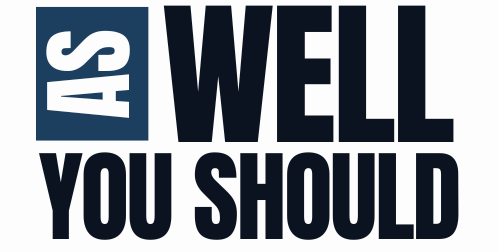15 Motivation Boosters for Breaking Through Fitness Plateaus (Game-Changers!)

Set Specific, Attainable Micro-Goals to Fuel Your Drive

When you hit a fitness plateau, your long-term goals can feel frustratingly distant. The key to reigniting your motivation lies in shifting your focus to smaller, more manageable targets. These “micro-goals” are easier to achieve and provide a series of quick wins that build powerful momentum.
Instead of fixating on losing ten pounds, aim to lose one pound this week or add a single extra rep to each set. This strategy makes progress feel more real and immediate. Each small victory boosts your confidence and renews your enthusiasm for the journey.
Choose goals that are realistic and measurable, often called SMART goals (Specific, Measurable, Achievable, Relevant, Time-bound). This framework allows for clear tracking and lets you know precisely when to celebrate your success or adjust your approach.
For example, a manageable and rewarding target could be adding just five minutes to your workout each week or mastering one new exercise. By setting micro-goals, you create a clear roadmap toward your larger objectives.
This approach breaks the process into bite-sized steps, making the journey feel far less overwhelming. It’s a proven method for maintaining motivation during challenging periods and pushing through to the next level of your fitness.
Embrace Active Recovery and Restorative Practices

Pushing harder isn’t always the answer when you’ve hit a plateau; sometimes, smarter recovery is what you need. Active recovery techniques help your body’s natural healing process, allowing you to come back stronger. Gentle, low-impact activities like walking, light jogging, or swimming are excellent choices.
These practices promote blood flow to your muscles, delivering the essential nutrients and oxygen needed for repair. They allow your body to heal while preventing the stiffness that can come from being completely still.
Yin yoga is an especially powerful tool for recovery and breaking through physical limits. This slow-paced practice focuses on deep stretching and holding poses for longer periods. According to health experts, this is key to improving mobility and promoting healing.
Yin yoga targets the deep connective tissues, like fascia, which supports recovery and aids in muscle repair. The meditative pace also calms the mind and relaxes the nervous system, providing a holistic boost to overcome a plateau.
Foam rolling is another effective active recovery technique that helps release muscle tension and improve flexibility. By prioritizing these restorative practices and dedicating time to rest, you prevent overtraining and find the renewed energy to push past your current limits.
Vary Your Workout Intensity to Spark New Progress

Changing your workout intensity is a science-backed strategy to break through fitness plateaus. When your routine becomes too predictable, your body adapts and becomes more efficient, which can halt your progress. Varying workout intensity prevents this from happening.
High-Intensity Interval Training (HIIT) is a fantastic way to introduce this variety. HIIT involves short bursts of all-out exercise followed by brief rest periods. This approach keeps workouts engaging, challenging, and highly efficient.
A HIIT session might include 30 seconds of burpees followed by 15 seconds of rest, then 30 seconds of high knees. This intensity boosts your metabolism and can increase calorie burn both during and after your workout, a phenomenon known as the afterburn effect.
Beyond HIIT, you can vary intensity by increasing the weights you lift, running at a faster pace, or reducing rest times between sets. These changes create a new stimulus that re-ignites muscle growth and fat loss.
This variety not only helps your body physically but also prevents workout boredom, helping you stay motivated. As fitness experts explain, regularly shifting your workout intensity keeps your body progressing and your mind engaged.
Cultivate a Powerful Mind-Body Connection

Overcoming a fitness plateau is as much a mental challenge as it is a physical one. Visualization is a valuable mental tool that can create a strong blueprint for success. This technique, widely used in sports psychology, can boost motivation, confidence, and commitment.
To practice visualization, find a quiet space, close your eyes, and vividly picture yourself achieving your goals. Imagine crossing a finish line, lifting a heavier weight, or feeling energized in your body. This mental rehearsal enhances focus and makes your goals feel more attainable.
Mind-body practices like Tai Chi can also provide a unique path to mental clarity. Often described as “meditation in motion,” this gentle art combines slow, flowing movements with deep breathing to calm the mind and reduce stress.
The deep concentration required in Tai Chi enhances mindfulness, helping you feel more present and engaged. As Harvard Health notes, its benefits for mental and physical well-being are significant. Nurturing this mind-body connection can provide the holistic balance needed to restore focus and break through a plateau.
Track Your Journey in a Fitness Journal

A fitness journal is a fantastic tool for building motivation and accountability. It allows you to set clear goals and keep a detailed record of your workouts, nutrition, and even your feelings. This practice helps not only in monitoring progress but also in recognizing patterns over time, as recommended by many fitness experts.
Writing down your workouts provides a real sense of accomplishment and holds you accountable to your commitment. Each entry is a record of your effort. By seeing your progress laid out in black and white, you can identify which strategies are working and where you might need to make adjustments.
A journal is also crucial for identifying what’s holding you back. A thoughtful self-assessment of your entries can help you pinpoint the root cause of a plateau. You might notice patterns in your sleep, stress levels, or nutrition that are affecting your results.
Highlighting personal records—like a new lifting weight or faster run time—provides a surge of inspiration when motivation fades. Reviewing past entries and seeing how far you’ve come can renew your passion for fitness and prove that your hard work is paying off.
Prepare and Repair Your Body for Peak Performance

To consistently perform at your best, you need to properly prepare your body before a workout and help it repair afterward. Dynamic stretching is a fantastic way to get ready for physical activity. Unlike holding a stretch, it involves actively moving your joints and muscles through a full range of motion.
This method warms up the muscles and improves flexibility, and is considered by health experts to be the ideal pre-workout activity. Simple movements like leg swings, arm circles, and walking lunges can make your workouts feel smoother and more powerful.
After your workout, foam rolling is a highly effective self-care practice to speed up recovery. This technique involves applying pressure to tight spots in your muscles. This helps loosen knots, relieve tension, and improve tissue quality.
Regular foam rolling improves flexibility and range of motion, reducing muscle soreness and helping to prevent injuries. Research from top fitness organizations supports its benefits for muscle relief. Pairing dynamic stretching for preparation with foam rolling for repair ensures your body is always ready to perform.
Diversify Your Routine with Cross-Training

Mixing up your workouts is one of the most effective ways to overcome a fitness plateau. Trying different activities, a strategy known as cross-training, challenges your body in new ways. This prevents boredom and overuse injuries while encouraging continuous adaptation and growth.
By engaging various muscle groups, you build a more well-rounded level of fitness. If you primarily run, adding swimming or cycling can boost your cardiovascular endurance without the high-impact stress on your joints. If you focus on weightlifting, a yoga class can dramatically improve your flexibility and balance.
Incorporate activities that you find genuinely fun, such as dancing, hiking, or rock climbing. You can also add variety by using different equipment, like kettlebells or resistance bands, to stimulate your muscles in a new way.
Joining a group fitness class or a team sport can also add a social element that makes exercise more enjoyable. Shaking up your routine can renew your excitement for fitness, helping you discover new interests and goals along the way.
Make Fitness Fit Your Life with Shorter Workouts

If a long workout feels daunting, try breaking it into smaller, more manageable segments. This approach can make exercise feel less overwhelming and easier to stick with, especially on a busy schedule. This method, sometimes called “exercise snacking,” is an excellent strategy for consistency.
For example, a 30-minute workout can be divided into three 10-minute sessions. You could do one in the morning, one during your lunch break, and one in the evening. As evidence shows, these mini-workouts can be just as effective for your health as one continuous session.
These shorter segments also boost motivation. Completing a small workout creates an immediate sense of accomplishment, which encourages you to continue with your plan for the rest of the day.
Additionally, shorter sessions allow you to maintain better focus on your technique and form. Instead of feeling drained and losing steam toward the end of a long workout, you can give your full attention to each movement. This leads to more effective training, more consistent habits, and better long-term results.
Look for Fresh Inspiration and New Ideas

Sometimes, the best way to boost your own motivation is to borrow some from others. Exploring new fitness podcasts, blogs, and books is a fantastic way to stay informed and inspired on your journey. Many offer expert insights into training, nutrition, and mental resilience.
Podcasts like the enduraLAB Podcast dive into topics like personalized training and pushing past limits, which can inspire you to tackle your own challenges. Listening to a show while you walk or warm up can get you in the right headspace to train.
You can find daily encouragement from shows like Fitness Motivation on Spotify. Other sources, like the Pure Motivation Fitness Podcast, discuss the importance of personal growth and sticking with your goals.
Exploring curated lists of top fitness content can introduce fresh ideas and new perspectives. This simple habit is an effective way to rejuvenate your motivation, learn new strategies, and keep progressing toward your goals.
Enlist a Workout Partner for Accountability and Fun

Having a workout buddy can be a huge boost for your motivation and consistency. When someone else is counting on you to show up, it creates a powerful sense of responsibility that’s hard to ignore. In fact, studies show that having a partner significantly increases how often people exercise.
A workout buddy provides crucial support and encouragement, especially on tough days when you might feel like quitting. Sharing your goals and celebrating achievements together makes the entire fitness journey more enjoyable and less isolating.
Finding a partner with similar fitness objectives is key to creating a successful and supportive team. You can push each other during challenging sets and hold each other accountable to the plan you’ve made.
Additionally, having a buddy can make your workouts more fun and dynamic. You can try new partner exercises, create friendly challenges, and keep sessions fresh and exciting. With an accountability partner, you are far less likely to skip workouts and more likely to achieve lasting results.
Celebrate Your Wins to Reinforce Positive Habits

Recognizing and celebrating your achievements is essential for staying motivated for the long haul. When you reach a fitness milestone—no matter how small—rewarding yourself reinforces all of your hard work. This positive reinforcement creates strong, healthy associations with your fitness routine.
Rewards don’t have to be extravagant. They can range from simple treats to bigger gifts that support your wellness journey. Enjoying a relaxing bath with Epsom salts, buying a new workout outfit you feel great in, or booking a well-deserved massage are all excellent options.
As psychology experts note, rewards tied to accomplishment can actually strengthen your internal drive to succeed. They serve as tangible proof that your efforts are paying off.
Set clear milestones to track your progress and know when it’s time to celebrate. Whether it’s hitting a new personal best, completing a month of consistent workouts, or sticking to your nutrition plan, a reward can be a powerful motivator to keep you moving forward.
What Causes a Fitness Plateau?

A fitness plateau happens when your body stops responding to your workout routine, and progress stalls. Understanding the root cause is the first step to overcoming it. Often, the main reason is adaptation; your body has simply become too efficient at the exercises you’re doing.
Other factors also play a major role. Not eating enough protein for muscle repair or the right amount of calories for your goals can halt progress. Overtraining without enough rest can also lead to fatigue and hurt your performance.
A lack of variety in your exercises can cause mental boredom and stop challenging your body, leading to stagnation. Likewise, an inconsistent routine where workouts are frequently skipped disrupts the momentum needed for continuous improvement.
Mentally, the right approach is key. Setting clear goals gives you a path to follow. Visualizing your success helps your brain believe it’s possible. And keeping track of your progress while getting support from others creates positive momentum that keeps you going.
By assessing your routine, nutrition, and recovery, you can pinpoint what’s holding you back. This self-awareness, combined with the strategies in this guide, empowers you to break through your plateau and continue your wellness journey with renewed purpose.
13) Explore New Motivational Podcasts On Fitness

Finding new podcasts can be a great way to stay motivated on a fitness journey. Many podcasts offer insights into training methods, nutrition, and mental strength.
The enduraLAB Podcast dives into topics like personalized training and overcoming fitness plateaus. This can inspire listeners to push through their own challenges.
Listening to shows like Fitness Motivation on Spotify can provide daily encouragement. This podcast helps keep listeners engaged and motivated during workouts.
Additionally, shows like the Pure Motivation Fitness Podcast discuss the importance of gym culture and personal growth. These conversations can reinforce the importance of sticking with fitness goals.
Exploring various podcasts can introduce fresh ideas and perspectives on staying fit. This is a simple yet effective way to rejuvenate motivation and keep progressing.
14) Enlist A Workout Buddy For Accountability

Having a workout buddy can significantly enhance motivation. When someone else is committed to exercising with you, it creates a sense of responsibility. This connection helps ensure that both individuals stick to their planned workouts.
A workout buddy can provide support and encouragement. On tough days, they can inspire one another to push through challenges. Sharing goals makes the journey more enjoyable and less isolating.
Finding a workout partner with similar fitness objectives is key. They can help track progress and celebrate achievements together. This teamwork fosters a stronger commitment to sticking with fitness routines.
Additionally, having a buddy makes workouts more fun. Different exercises can be introduced, keeping sessions fresh and exciting. This variety helps prevent boredom, which is often a cause of fitness plateaus.
With accountability, individuals are less likely to skip workouts. They know their partner is counting on them. This shared dedication can lead to more consistent and rewarding fitness experiences.
15) Reward Yourself After Major Milestones

Celebrating achievements is key to staying motivated. When someone reaches a fitness milestone, rewarding themselves can reinforce their hard work.
Rewards can vary from simple treats to bigger gifts. It could be as easy as enjoying a favorite snack or buying new workout gear.
Setting milestones helps track progress, making it easier to decide when to reward oneself. After completing a certain number of workouts or reaching a weight goal, a reward can feel well-deserved.
Rewards create positive associations with fitness routines. They remind individuals of their achievements and keep them focused on future goals.
Incorporating rewards into a fitness plan can boost motivation. It’s important to choose rewards that fit personal values and encourage healthy habits.
Common Causes of Plateaus
Several factors can lead to fitness plateaus.
- Adaptation: The body becomes accustomed to specific workouts. This reduces gains over time.
- Nutrition: Poor dietary choices can hinder progress. Insufficient protein intake or excess calories may stall muscle growth or fat loss.
- Overtraining: Excessive workouts without rest can lead to fatigue. This can impair performance and slow down results.
- Lack of Variety: Doing the same exercises repeatedly can cause boredom. This not only affects motivation but can also limit physical challenges.
- Inconsistent Routines: Skipping workouts or not following a program can disrupt progress. Consistency is key for continued improvement.
Identifying Personal Blockages
Recognizing personal barriers is crucial for breaking through plateaus.
- Self-Assessment: Individuals should evaluate their workouts and nutrition. Keeping a log can help highlight patterns that may cause stagnation.
- Setting Goals: Specific and measurable goals can provide direction. It’s essential to assess if current goals still align with fitness aspirations.
- Physical and Mental State: Understanding emotional and physical well-being is vital. Stress, lack of sleep, or low motivation can affect performance.
- Feedback from Experts: Consulting fitness trainers or nutritionists can provide insights. Their experience can help identify issues that individuals may overlook.
Scientific Approaches To Motivation

Understanding motivation through scientific methods can help individuals push past fitness plateaus. By focusing on cognitive strategies and behavioral dynamics, people can create effective plans that encourage progress and maintain enthusiasm.
Cognitive Strategies
Cognitive strategies involve the mental processes that influence motivation.
One effective method is goal setting. Here, individuals can create specific, measurable, achievable, relevant, and time-bound (SMART) goals. This approach provides clear direction and a sense of purpose.
Visualizing success is another key cognitive strategy. By picturing themselves achieving their fitness goals, individuals can enhance their motivation. Studies show that visualization can strengthen neural pathways related to the desired outcome, improving confidence and drive.
Additionally, positive self-talk can boost motivation. Encouraging phrases can help counter negative thoughts, fostering a more resilient mindset. This combination of cognitive strategies empowers individuals to stay focused despite challenges.
Behavioral Dynamics
Behavioral dynamics focus on actions that can enhance motivation. One effective technique is routine variation. Changing workout routines helps combat boredom and keeps the body challenged. This can lead to improved performance and renewed interest in fitness activities.
Tracking progress is another important behavior that can motivate individuals. Keeping a journal or using fitness apps allows for visible evidence of improvement. Celebrating small victories can create a positive feedback loop that fuels further motivation.
Social support plays a critical role as well. Exercising with friends or joining fitness groups can lead to increased accountability and encouragement. The interaction creates a community that reinforces commitment and celebrates progress as a team.






